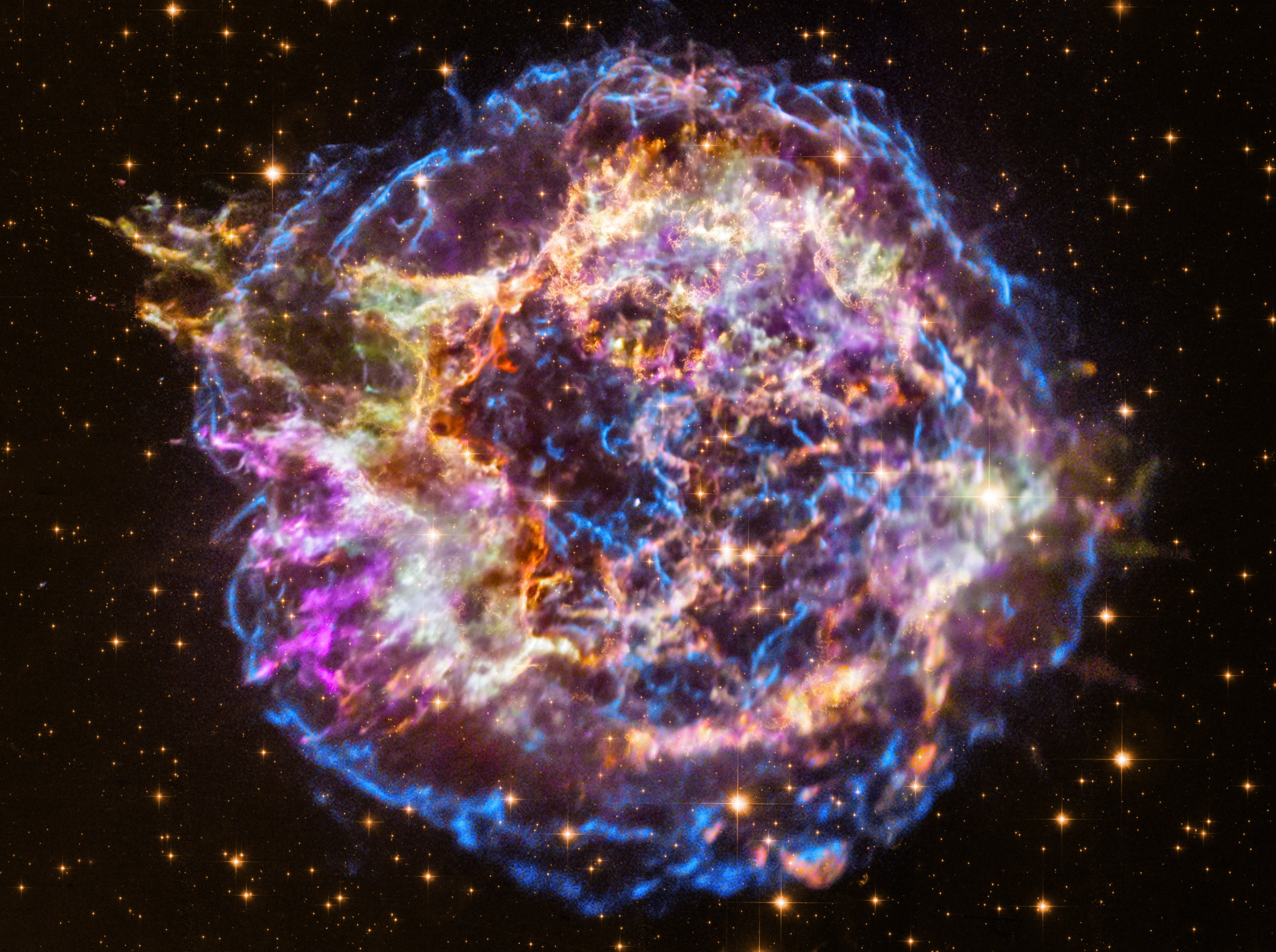
Posted on 01/23/2021 1:40:07 PM PST by MtnClimber
Explanation: Massive stars in our Milky Way Galaxy live spectacular lives. Collapsing from vast cosmic clouds, their nuclear furnaces ignite and create heavy elements in their cores. After a few million years, the enriched material is blasted back into interstellar space where star formation can begin anew. The expanding debris cloud known as Cassiopeia A is an example of this final phase of the stellar life cycle. Light from the explosion which created this supernova remnant would have been first seen in planet Earth's sky about 350 years ago, although it took that light about 11,000 years to reach us. This false-color image, composed of X-ray and optical image data from the Chandra X-ray Observatory and Hubble Space Telescope, shows the still hot filaments and knots in the remnant. It spans about 30 light-years at the estimated distance of Cassiopeia A. High-energy X-ray emission from specific elements has been color coded, silicon in red, sulfur in yellow, calcium in green and iron in purple, to help astronomers explore the recycling of our galaxy's star stuff. Still expanding, the outer blast wave is seen in blue hues. The bright speck near the center is a neutron star, the incredibly dense, collapsed remains of the massive stellar core.
For more detail go to the link and click on the image for a high definition image. You can then zoom by moving the magnifying glass over an area and then clicking. The side bars will move the zoomed area over the photograph.

Cassiopeia, wife of King Cepheus, mother of Andromeda.
The constellation Andromeda can be seen with the naked eye if you’re far enough away from any light pollution.
Astronomer John Flamsteed may have spotted it — there’s some dispute — in the late 1600’s. He is also known for spotting Uranus and mistaking it for a star.
Nice photo of God’s Creation.
Love it,
Except the part where they mention Star Formation.
That is complete B.S.
No one has ever seen a star forming, No One....
I would say you need some serious warp speed and a lot of photon torpedoes to get through THAT thing!
Just beautiful, as always. :)
Never thanked you but I will now. These space pictures are always beautiful and interesting.
I thought heavy elements were created by the massive super nova explosion?
I thought iron was the heaviest element that can be created by normal nuclear fusion inside a star?
You are correct. I would not consider iron to be heavy. Maybe they really meant heavier???
You are correct. I would not consider iron to be heavy. Maybe they really meant heavier???
Iron has the most stable nucleus.
No one?
God has. Satan (unfortunately) has.
Humans are far too ephemeral to observe any one of such events from beginning to end. Heck, any single one of us is far too short lived to witness more than a tiny slice of the formation of a limestone stalactite or stalagmite, and that’s a quickie in the grand scheme of things.
In either case, however, we most certainly CAN and have observed those “tiny slices” of formation, in many examples of many stages. For instance:
https://www.jpl.nasa.gov/images/multi-wavelength-views-of-protostars-in-ic-1396/

Casseopeia is a convenient and massive producer of microwave energy. It makes a very convenient target for ground station antenna calibration and measurement.
There are equations for calculating the flux vs. frequency. It can be a strong enough signal to track on.
Disclaimer: Opinions posted on Free Republic are those of the individual posters and do not necessarily represent the opinion of Free Republic or its management. All materials posted herein are protected by copyright law and the exemption for fair use of copyrighted works.